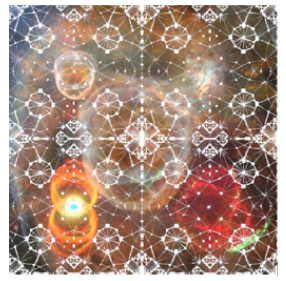- Submissions

Full Text
Academic Journal of Engineering Studies
When Architecture Encounters Art and Mathematics
Dan Ophir*
Department of Computer Science, Israel
*Corresponding author:Dan Ophir, Department of Computer Science, Israel
Submission: April 16, 2022; Published: April 28, 2022
.jpg)
ISSN:2694-4421 Volume2 Issue5
Short Communication
In our current challenging era where paradigms are broken and glass ceilings are shattered, we should pause for a moment from the current events which cause us to zoom in on our regular activities and instead experience the spectacular works of architecture, mathematics and art. Apparently, there is no connection between these three areas. But what about geometry, buildings, animals, nature and evolution? What is the magic in a gold rectangle; if you break down a square whose length is the same as the small side length in the original gold rectangle, do you get a gold rectangle again? The “golden ratio” which is a magical number aroused the curiosity of Renaissance architects and artists in the fields of painting and sculpture to the point where their works were attributed to divine qualities and were considered as the most perfect and beautiful proportion [1]. The golden ratio is an example of harnessing mathematics and art to create architecture. Mathematics utilizes the accuracy required for optimization and comfort, and art represents the aesthetics provided by architecture.
Some fields of mathematics that are relevant to architecture will be mentioned below,
along with their application in architecture:
Planar geometry: Regular polygons implemented in a pentagon-the building of “The
Department of Defense” in Washington DC. The importance of proportion in geometry in
relation to architecture, when considering the Golden Ratio and the Fibonacci series.
Stereometrics: Projection of a three-dimensional space into two-dimensions. The
Stereometrics used in architecture is also used in modeling the designed object using several
tools, such as Computer Aided Design (CAD) and Virtual Reality to model the environment.
Figure 1:Opera House in Paris, constructed as fractals, in which some elements appear recursively in smaller scales repeatedly.

Topology: Fractals a mathematical object exceeding the topological dimension is applied in the Opera House in Paris, where the elements are repeated in smaller scales (Figure 1).
Algebra-group theory: Architecture utilizes much central symmetry for example, in the floor mosaics. Such a decorated design is supported by Group theory. The decoration’s positions represent the group elements; an operator in Group theory is represented in the decoration by a rotating angle (Figure 2).
Calculus-interpolation and spline fitting: Architecture sometimes utilizes curved lines to merge the landscape into a single composition, for example, the roads in a mountain terrain, the rows in fields as well as bridges assume the shape of mountains, namely, curved lines. In order to treat those curve lines, Interpolation and Spline Fitting operations are performed [2].
Optimization-genetic algorithm: Inspired by the process of natural selection it often resembles some kind of architecture, for example, in creating a beehive which is optimally designed saving space. The neighboring hexagons totally fill up the space in the beehive providing the bees with the greatest comfort more than squares would be able to provide.
Figure 2:The mosaic on the floor is designed using central symmetry.

The other engineering domains are supported by mathematics but architecture differs from them in the versatility of the mathematical fields that can be applied in architecture and in the artistic aspects (Figure 2) in which mathematics was involved supporting the architecture.
References
- Carter Mc Robert (2009) Louis I kahn paperback. Phaidon Press, UK, p. 68.
- Brooks H Allen (1997) Le corbusier's formative years-charles-edouard jeanneret at la chaux-de-fonds. 2nd edn, University of Chicago Press, USA, P. 540.
© 2022 Dan Ophir. This is an open access article distributed under the terms of the Creative Commons Attribution License , which permits unrestricted use, distribution, and build upon your work non-commercially.
 a Creative Commons Attribution 4.0 International License. Based on a work at www.crimsonpublishers.com.
Best viewed in
a Creative Commons Attribution 4.0 International License. Based on a work at www.crimsonpublishers.com.
Best viewed in 







.jpg)






























 Editorial Board Registrations
Editorial Board Registrations Submit your Article
Submit your Article Refer a Friend
Refer a Friend Advertise With Us
Advertise With Us
.jpg)






.jpg)














.bmp)
.jpg)
.png)
.jpg)










.jpg)






.png)

.png)



.png)






